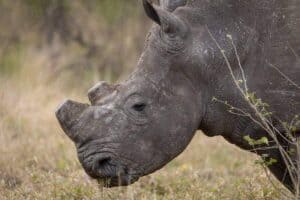SA Wildlife and its products are in high demand globally, with China and other Asian countries representing the largest markets.

Wildlife smuggling is now the world’s fourth-biggest criminal enterprise, after drugs, human trafficking, and counterfeiting, according to the World Wildlife Fundi (WWF). And South Africa is being hit hard as protected animal populations are targeted and, as a result, sustainable economic growth is threatened.
Endangered species conservationist Carmen Warmenhove said although it may not be directly linked or parallel to the economic system, it cost the country huge amounts of revenue.
“Wildlife crime, especially with big animals like the rhino, have a huge impact ecotourism. SA needs a more just conservation approach,” she said.
SA wildlife products in high demand globally
Wildlife and wildlife products from South Africa are in high demand globally, with China and other Asian countries representing the largest markets.
Criminal networks have established a supply chain on the movement of illegal wildlife products through various stages, from source to poaching, and then through various transit points until reaching the consumer at its destination.
Ultimately, the end-user is the enabler of the whole chain, as the demand for these products drives the crime and related prices.
ALSO READ: Poaching, horn trade declines but rhinos still in danger
Tourism Minister Lindiwe Sisulu said tourism contributed 3.7% to SA’s gross domestic product, more than agriculture, utilities, and construction, while it remained the most important driver for job creation globally.
Ecotourism has arguably been the fastest-growing segment of tourism in SA and without the wildlife, Warmenhove said some tourist attractions would not be able to make money.
“This is a difficult estimate to make. As a guideline, Traffic [a global NGO working on trade in wild animals and plants] has calculated that wildlife products worth about $160 billion [about R2.6 trillion] were imported around the globe each year in the early ’90s,” the fund said.
“There is a large and profitable illegal wildlife trade but because it is conducted covertly, no one can judge with any accuracy what this may be worth.”
WWF noted that the trade involved millions of wild plants and animals from thousands of species.
“To provide a glimpse of the scale of wildlife trafficking, there are records of over 100 million tons of fish, 1.5 million live birds and 440 000 tons of medicinal plants in trade in just one year,” the WWF added.
Rhinos and pangolins the most trafficked
Frances Craige, chief director of enforcement at the department of forestry, fisheries and the environment, said rhinos, abalone, succulents and pangolins were the most trafficked in SA.
Craige said at least 259 rhinos were poached in a span of six months this year and while it decreased from 451 in 2021 and the highest 1 215 in 2014, it was higher than in 2009.
“Aside from their critical roles in maintaining balanced and sustainable ecosystems, these animals serve as a major tourist attraction,” she said during the Countering the Illegal Wildlife Trade in Southern Africa training workshop.
“Wildlife crime destroys biodiversity by threatening the extinction of critically endangered species. It destroys biodiversity, drains resources, disrupts tourism, diminishes livelihoods, and destabilises sustainability.
“It diminishes resources as funds that could have gone towards conservation or community development are now spent on antipoaching efforts and it drains the tourism industry.”
Following complaints from wildlife crime investigators, who also called for courts across the globe to take wildlife crime cases seriously, Craige said more than 69 arrests in SA relating to rhino poaching and trafficking were made in the last six months.
“It’s hard for the courts to prioritise these cases because if you look here, rhino poaching from 2015 to 2020 has only had 4 620 cases while murder was 100 372, sexual offences 257 370 and drug-related crime at 1 278 563,” she said.
However, Craige said it was not always doom and gloom as they have had a high conviction rate for wildlife crime cases. Some of the issues raised at the workshop included ways to combat wildlife crimes like strengthening law enforcement not only at a national level, but also at a transnational level where these trafficking rings tend to operate.
ALSO READ: ‘Send in the army’: Rhino population decimated by highly organised poachers
“National and transnational law enforcement agencies need to collaborate with local citizens,” said a wildlife crime investigator.
“Frameworks need to be put in place to ensure private sector and civilian society unite in order to come up with proactive crime prevention strategies.”
Craige said the department was working on increased focus on the prosecution phase such as establishing a director of public prosecutions environmental working group to enhance environmental prosecutions and to address centralisation of cases.






